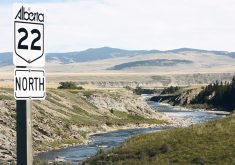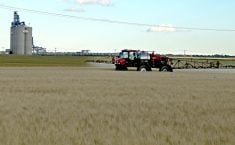OSLO, Norway (Reuters) — A frozen Arctic vault built to preserve global agricultural crops from extinction received seeds Feb. 27 from the largest number of new contributors yet, a custodian of the remote facility said.
The Svalbard Global Seed Vault, set in permafrost caves on an island halfway between mainland Europe and the North Pole, was launched in 2008 as the ultimate backup for the world’s gene banks to protect plants from war, disease and climate change.
The vault has received samples from across the world, and played an essential role between 2015 and 2019 in rebuilding seed collections damaged during the war in Syria.
Read Also

New coal mine proposal met with old concerns
A smaller version of the previously rejected Grassy Mountain coal mine project in Crowsnest Pass is back on the table, and the Livingstone Landowners Group continues to voice concerns about the environmental risks.
On Feb. 27, depositors carried crates of seeds into the vault’s entrance, a long narrow structure that juts out of the snow-covered hillside.
Twenty-three seed banks took part, nine of them for the first time. It is the largest number of newcomers introduced at one single occasion, according to Crop Trust, a non-profit that operates the facility along with Norwegian authorities.
First-time depositors included seed banks in Bosnia and Herzegovina, Cameroon, Indonesia, Kazakhstan, Kenya, Madagascar, Nigeria and Zambia, Crop Trust said.
The crates contained beans, barley, cowpea, maize, rice, millet and sorghum.
“Preserving genetic diversity in this Arctic fastness ensures the adaptability and resilience in our crops, guaranteeing food security for generations to come,” said Crop Trust executive director Stefan Schmitz.
Many of the deposits were the result of a global 10-year biodiversity project known as BOLD, designed to boost global food and nutrition security, the trust added.
With the latest deposit, 111 seed banks in 77 countries have a backup of their plants in Svalbard, said Norway’s ministry of agriculture and food.
The chambers, which are only opened three times a year to limit the seeds’ exposure to the outside world, boast temperatures of around -18 C.

















